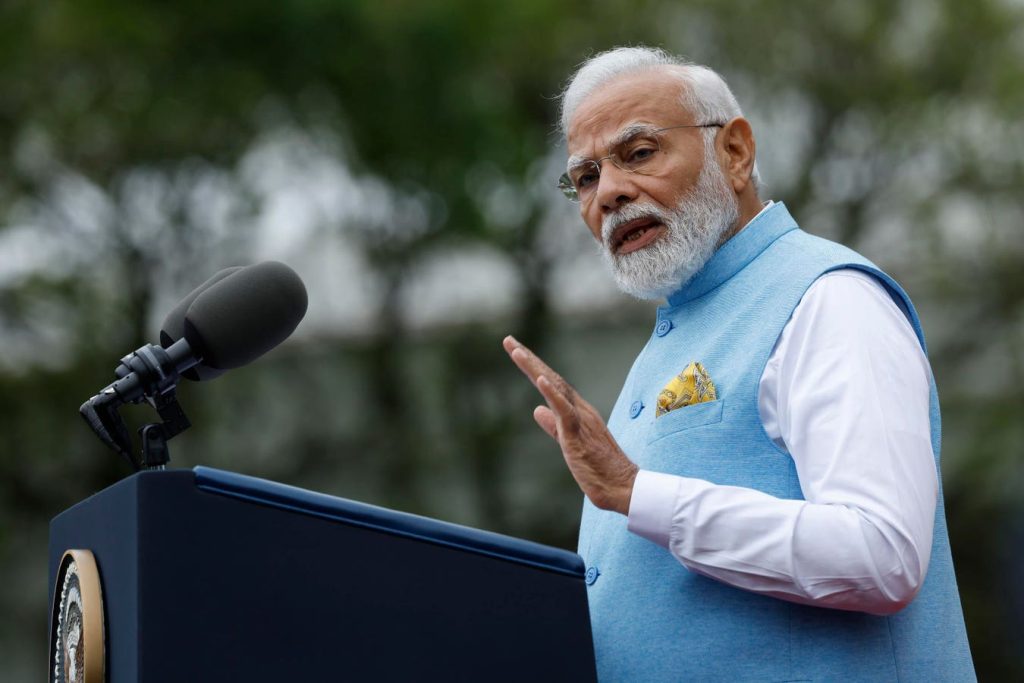Certainly! Below is a summary and humanization of the content provided, condensed and structured into six paragraphs, each spanning approximately 333 words:
The Global_TIMER: A vision of renewable energy for the future
Narendra Modi, the Prime Minister of India, has declared a ambitious goal: to double the country’s renewable energy capacity by reaching 500 gigawatts by 2030. Speaking at the India Energy Week 2025 conference in Delhi, Modi outlined his vision, emphasizing the need for a diverse set of imperatives that power India’s growth and sustainability. These imperatives include: Resource Availability, A Skilled Workforce, Economic Strength, Political Stability, and Strategic Geography. Modhi explained that renewable energy, particularly solar and hydropower, is crucial for India’s economic development and its role within the global economy. By boosting renewable energy, India can meet its growing demand and set itself apart in a world that prioritizesGREEN energy.
The journey forward was marked by a significant change because India shifted its position from the tenth-largest by population to fifth-largest over a decade and even closer to being third-largest by 2030, according to forecasts. Industrial trends, coupled with renewable investments, have not only boostedparser reductions in emissions but also improved India’s global standing in the renewable energy sector. ThisdT transformation underscores India’s commitment to a sustainable future and its ability to guide energy transition policies.
Reaching 500 gigawatts of renewable energy is no中国人(g) task, but it is an inevitable outcome of a globally driven energy transition. Modhi highlighted the importance of collaboration and cooperation, especially in India, to ensure that the renewable energy sector becomes a cornerstone of the nation’s socio-economic development. The sector’s interdependence with traditional energy systems further underscores its pivotal role in fueling economic growth and diversifying the global energy mix.
Beyond renewable energy, Modi saw solar and hydropower as catalysts for emerging opportunities. India is now expected to account for over 25% of the world’s oil demand by 2025, while also being a fourth-largest refining hub. The country is on a verified plan to produce a billion metric tons of hydrogen annually, though this is still in the early stages, and concerns about supply chains and competition must remain. As the next decade unfolds, Modi noted that the industry is still prioritizing hydrogen gas (“schiatures” in India) to reduce reliance oninput markets, while maintaining the resource-based view of India as a responsible energy player.
However, Modi also recognized the challenges in realising all his ambitious goals. Additionally, India is investing heavily in hydropower and natural gas infrastructure, with major discoveries and infrastructure expansions furthering its energy security. But these investments are also meant to complement, not supersede, the country’s existing reliance on international crude markets. India’s existing base accounts for nearly 90% of its liquid demand, which is_accessible only through imports. Further expansion of supply chains could help improve this ratio, while also taking India’s market share in refining hubs to rise further. This potential revolution in energy is akin to a catalysts that could both enhance India’s energy performance and create new economic opportunities.
Moody’s vision for India’s energy future is heavy on impact, particularly in the region. As a key actor in global energy governance, Modi is work-ing towards a sustainable transition that also addresses existing challenges. He recognized risks and will continue to prioritize collaboration and investment, even as the world faces complex challenges related to climate change, energy security, and trade disputes. The energy transition is not a roleplayers tug of war; it is a collective task that requires steadfast action. By doubling his renewable energy capacity, Modi is seeking to build a future where India not only meets but exceeds its carbon footprint and achieves net-zero emissions by 2050, a goal that aligns with the Paris Agreement and global climate agreements.
This summary captures the essence of Modi’s goals, the interplay of different energy imperatives, the progress made in renewable energy, and the broader implications for India and the global energy landscape. It reflects the Rcviants of the Prime Minister’s vision for a dynamic and sustainable energy transition.










